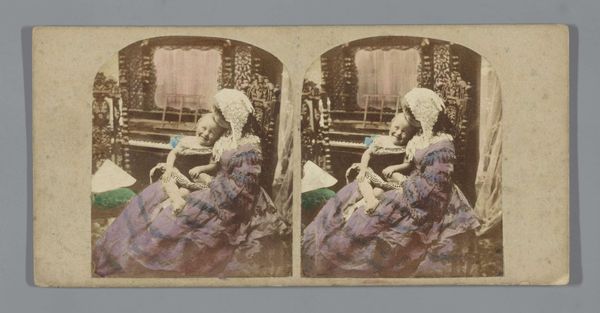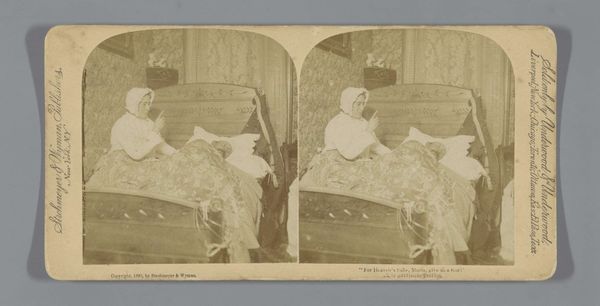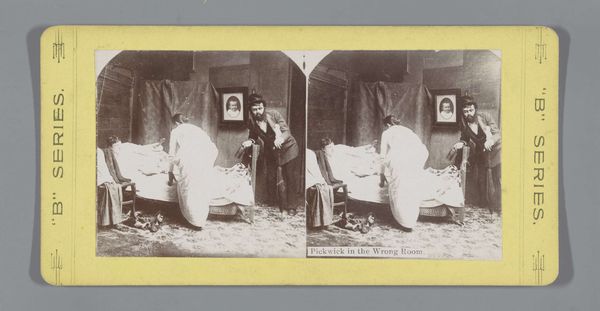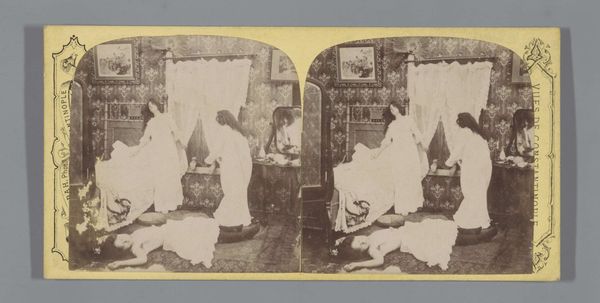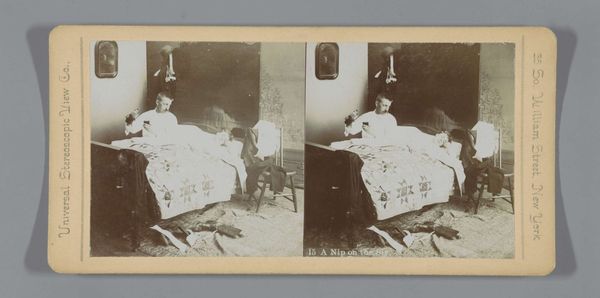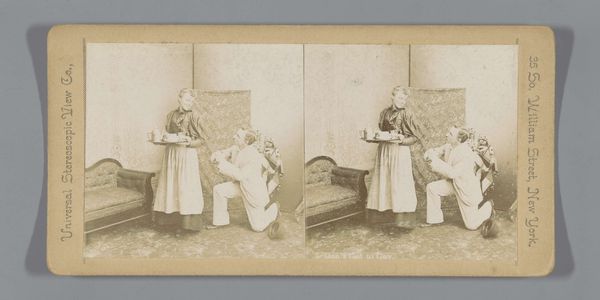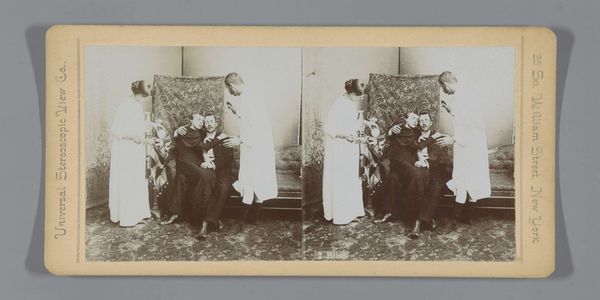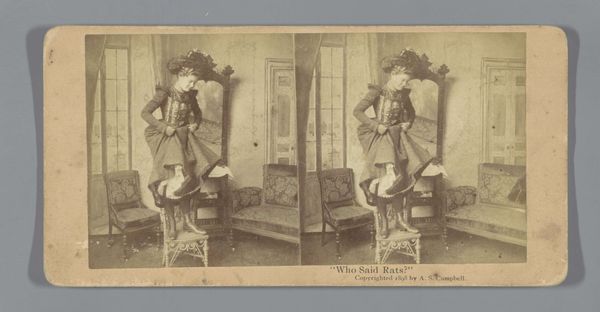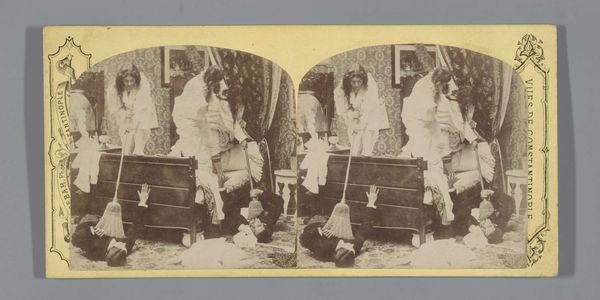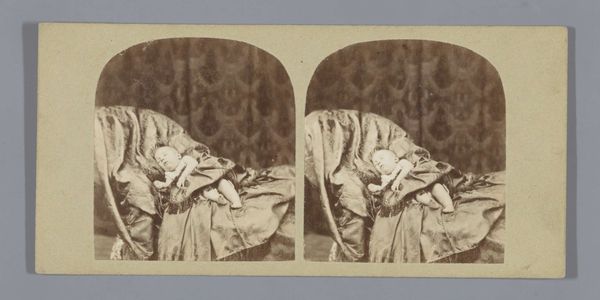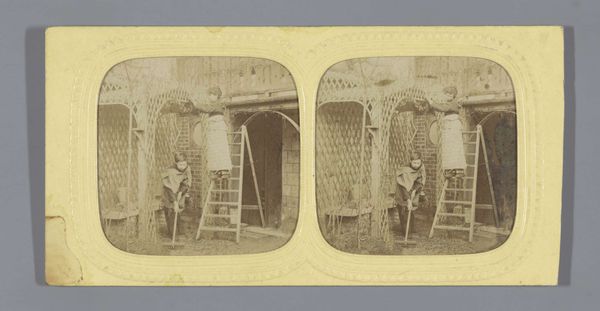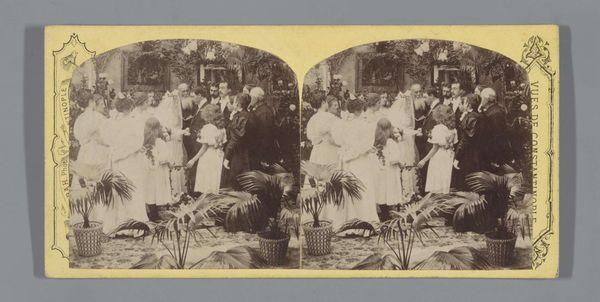
photography
#
portrait
#
face
#
photography
#
genre-painting
Dimensions: height 88 mm, width 177 mm
Copyright: Rijks Museum: Open Domain
Editor: Here we have an anonymous photograph titled "Paar met zwart geschminkte gezichten op schommel", which translates to "Couple with black-painted faces on swing". It was taken sometime between 1890 and 1920. It’s a simple studio shot, but there's something unsettling about the image and their dark faces in contrast with their otherwise plain attire. How should we approach a work like this? Curator: We must first acknowledge the troubling visual shorthand of the “black-painted faces,” a likely reference to blackface minstrelsy prevalent during that period. Instead of dismissing the photograph outright, we need to dissect how it participated in and potentially reinforced harmful stereotypes through the very *materials* of performance: the greasepaint, the costumes, the props, the constructed environment. How are these materials used? What do they conceal or reveal about the subjects and the societal gaze upon them? Editor: So, you're suggesting we focus on the tangible aspects and their implications, rather than, say, artistic merit? Curator: Precisely. Think about the labour involved: applying the makeup, constructing the swing, sewing the costumes. Whose labour was it? What was the exchange involved? Was the image intended for mass consumption, or was it something more intimate? Understanding these aspects offers insight into the social context and the power dynamics at play. Also note the wood material serving as backdrop for the scene; perhaps it's part of the swing infrastructure? It definitely brings more elements to think about... Editor: That makes me reconsider the potential commercial aspect. It's easy to jump to judgment, but grounding our understanding in the physical reality of its creation is crucial. Curator: Indeed. By examining the material realities—the tools, processes, and economics behind this image—we can grapple with the uncomfortable truths about representation, performance, and the cultural consumption of racial identity in the late 19th and early 20th centuries. Editor: Thanks. I now understand how materials speak volumes in artworks such as this one. Curator: Yes, objects are like time capsules. We must proceed by carefully documenting context.
Comments
No comments
Be the first to comment and join the conversation on the ultimate creative platform.
